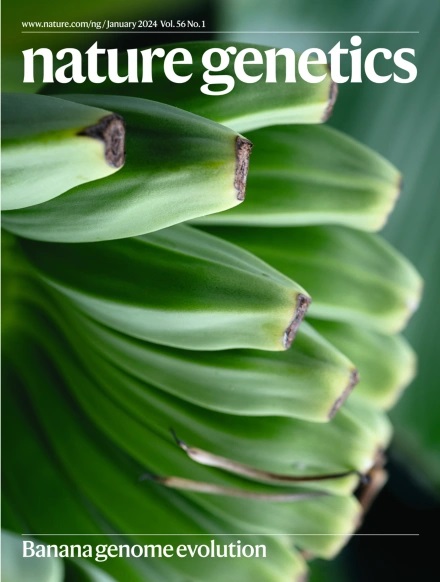LTR逆转录转座子采用增强子产生病毒样颗粒,导致发育肢体表型
IF 29
1区 生物学
Q1 GENETICS & HEREDITY
引用次数: 0
摘要
转座因子(te)分布在哺乳动物基因组中。te的沉默可以防止由导致基因组不稳定的全局激活或干扰基因转录的插入突变引起的有害影响。然而,TE的激活是否会在不直接影响基因表达的情况下导致疾病,在很大程度上是未知的。在这里,我们发现TE插入可以采用附近的调节活性,导致产生影响胚胎形成的细胞类型特异性病毒样颗粒(vlp)。在Fgf8基因上游插入的LTR反转录转座子沉默失败导致它们在小鼠发育过程中共表达。VLP在发育肢体中表达fgf8的细胞中组装引发凋亡细胞死亡,导致肢体畸形,类似于人的指外畸形。表型可以通过突变反转录转座子编码序列来拯救,从而阻止其完整的内源性逆转录病毒周期。我们的研究结果表明,TE插入可以被纳入局部基因组调控景观,并且着床后胚胎中VLP的产生可能导致发育缺陷。本文章由计算机程序翻译,如有差异,请以英文原文为准。


Enhancer adoption by an LTR retrotransposon generates viral-like particles, causing developmental limb phenotypes
Transposable elements (TEs) are scattered across mammalian genomes. Silencing of TEs prevents harmful effects caused by either global activation leading to genome instability or insertional mutations disturbing gene transcription. However, whether the activation of a TE can cause disease without directly affecting gene expression is largely unknown. Here we show that a TE insertion can adopt nearby regulatory activity, resulting in the production of cell-type-specific viral-like particles (VLPs) that affect embryo formation. Failure to silence an LTR retrotransposon inserted upstream of the Fgf8 gene results in their co-expression during mouse development. VLP assembly in the Fgf8-expressing cells of the developing limb triggers apoptotic cell death, resulting in a limb malformation resembling human ectrodactyly. The phenotype can be rescued by mutating the retrotransposon coding sequence, thus preventing its full endogenous retroviral cycle. Our findings illustrate that TE insertions can be incorporated into the local genomic regulatory landscape and that VLP production in post-implantation embryos can cause developmental defects. Activation of an LTR retrotransposon inserted upstream of the Fgf8 gene produces viral-like particles in the mouse developing limb, triggering apoptosis and causing limb malformation. This phenotype can be rescued by mutations in the retrotransposon coding sequence.
求助全文
通过发布文献求助,成功后即可免费获取论文全文。
去求助
来源期刊

Nature genetics
生物-遗传学
CiteScore
43.00
自引率
2.60%
发文量
241
审稿时长
3 months
期刊介绍:
Nature Genetics publishes the very highest quality research in genetics. It encompasses genetic and functional genomic studies on human and plant traits and on other model organisms. Current emphasis is on the genetic basis for common and complex diseases and on the functional mechanism, architecture and evolution of gene networks, studied by experimental perturbation.
Integrative genetic topics comprise, but are not limited to:
-Genes in the pathology of human disease
-Molecular analysis of simple and complex genetic traits
-Cancer genetics
-Agricultural genomics
-Developmental genetics
-Regulatory variation in gene expression
-Strategies and technologies for extracting function from genomic data
-Pharmacological genomics
-Genome evolution
 求助内容:
求助内容: 应助结果提醒方式:
应助结果提醒方式:


